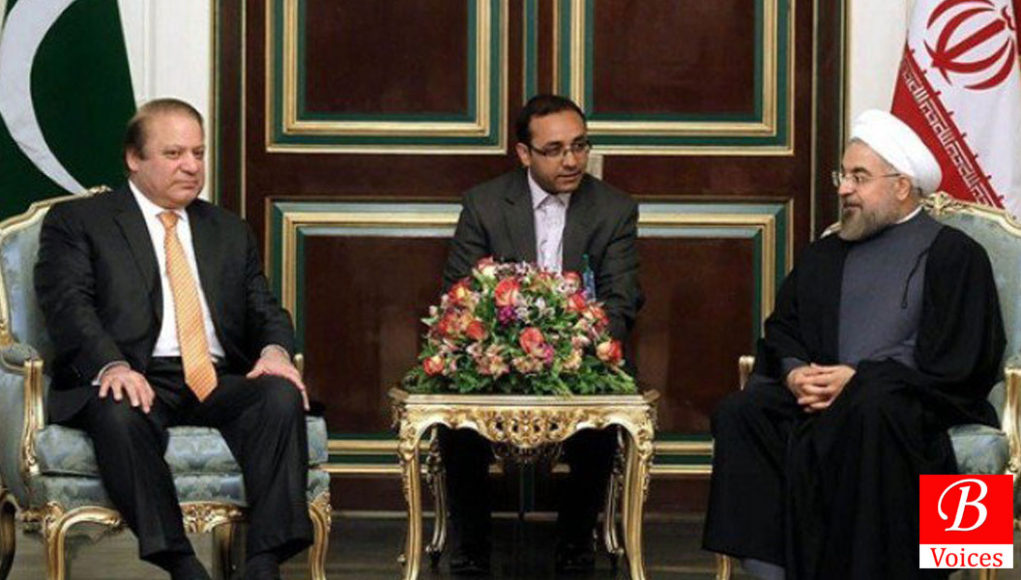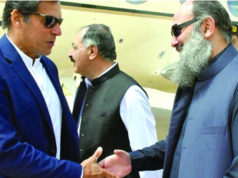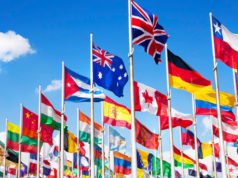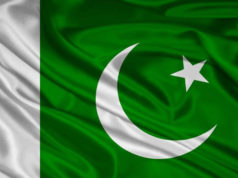Ayaz Ahmed
After the 9\11 Incident, both countries agreed to put their differences aside and agree on a broad-based government for Afghanistan under the UN auspices. On 19 November 2010, Iran’s Supreme Leader Ayatollah Ali Khamenei appealed to Muslims worldwide to back the freedom struggle in Jammu and Kashmir, equating the dispute with the ongoing conflicts in Palestine. In May 2014, the two countries agreed to joint operations against terrorists and drug traffickers in the border regions.
On Iran’s nuclear programme, Pakistan has continued its policy of neutrality. In a speech at Harvard University in 2010, the Pakistan’s former Foreign Minister Shah Mehmood Qureshi justified Iran’s nuclear program as peaceful and argued that Iran had “no justification” to pursue nuclear weapons, citing the lack of any immediate threat to Iran, and urged Iran to “embrace overtures” from the US.
Pakistan played the role of a mediator between Iran and Saudi Arabia when tensions between the two countries deteriorated after the hanging of a Shia cleric by Saudi Arabia. In this regard, Prime Minister Nawaz Sharif and former Chief of Army Staff General Raheel Sharif visited Tehran on 19 June 2016 ─ a day after holding meetings with Saudi leadership in Riyadh in a bid to defuse the tension.
The economic sanctions, isolation from the international banking system and the loss of oil revenues have severely stunted Iranian economic growth. But, the nuclear agreement has proved to be of paramount importance for sanctions-stricken Iran. As Iran re-enters the global economy, its consumer market of 78.5 million people will attract a number of international investments. By some estimates, Iran’s economy is expected to grow by an additional two percentage points, to more than 5 percent GDP growth within a year. After an additional 18 months, GDP growth could well reach 8 percent. Both Pakistan and Iran should avail this opportunity by increasing their annual trade to $5bn by 2021.
Firstly, Iran has the fourth largest proven crude oil reserves in the world – estimated at 157.8 billion barrels. The International Energy Association forecasts that sanctions-free Iran will be able to ramp up oil production to 800,000 barrels per day within months, roughly four percent of global output. Since Pakistan is an energy-deficit country, it needs adequate energy resources to fulfil its power requirements. If Iran and Pakistan establish an oil pipeline, this will help Tehran earn needed revenue and Islamabad to obtain a large amount of oil for its energy needs.
Secondly, Iran possesses 1,187.3 trillion cubic feet gas reserves. The lifting of the sanctions has opened export avenues for Tehran to sell gas at competitive prices to China, Pakistan, India and the EU. Pakistan should not let India and other developing or developed countries from dominating the gas market of Iran. Islamabad should come forward with commitment and realistic intention to finalize its portion of 785 km of the IP gas pipeline with Chinese financial and technical assistance. If Pakistan continues to exercise delay or reluctance in completing the pipeline as soon as, India will succeed to dominate the Iranian gas market.
Thirdly, the severe economic sanctions have left Iran with an ageing national airline inadequate in terms of quality and quantity. Iran’s transportation minister has announced that the country will replace as many as 400 commercial aircraft over the next 10 years; that’s at least $20 billion in potential revenue for foreign aviation companies. After receiving its frozen assets, now Iran is able to purchase the needed airplanes. Though Pakistan’s aviation sector is facing a range of issues, it still has the opportunity to modernize this sector by leaps and bounds and conclude agreements with Iran on either jointly producing airplanes or supporting Iran in terms of consultancy in the field.
Fourthly, Iran lags behind in terms of technology and innovation. Last year the total estimated technology market in Iran was around $4 billion. The nuclear deal has induced a large number of mobile, computer and software companies to seek out Iranian partners and distributors to open their outlets in Iran. Therefore, Iran’s tech market is expected to grow to 16 billion annually. Pakistan can enormously benefit from the tech market of Iran. There is a sizeable number of technology graduates and experts in Pakistan who are in search for jobs opportunities in the country. Concluding accords in this sector will help Iran to expand its market of information technology and Pakistan to develop its field of technology and provide jobs to its skilled youth.
Fifthly, after considering the effectiveness of CPEC, Iran has displayed its inclination to join the grand economic corridor. If CPEC is converted into the China-Pakistan-Iran Economic Corridor (CPIEC), it will make the corridor a greater, more efficient and safer game-changer in terms of regional trade and connectivity. CPIEC will help Pakistan and Iran make the Gwadar and Chabahar ports supplementary rather than competitive. After making both ports fully operational, Pakistan and Iran may determine their shares of Central Asian exports and imports, thereby dispelling the impression of competition and zero-sum game. Iran’s partnership in the corridor will also assist in the better security of CPIEC. Having a stake in the corridor, Iran will dismantle the clandestine networks of RAW, reportedly based in southern and eastern Iran to foment insurgency in Balochistan.
Sixthly, Pakistan can seek Iranian assistance to block the burgeoning cross-border smuggling of cheap Iranian oil and drugs to Balochistan. Narcotics and oil smuggling have made non-state actors financially sound to continue their troublesome shenanigans in the province. Proper regulation of oil black-marketing will help both countries earn substantial revenue.
Lastly, Greater cooperation between Pakistan and Iran will be instrumental in weeding out hardened terrorists and militants from the region. Iran will not permit Taliban leaders to exploit its border areas to penetrate into Pakistan as former Afghan Taliban leader Mullah Mansour Akhtar did. Pakistan and Iran can pressurize Afghanistan to take stringent actions against TTP fugitives hiding in eastern Afghanistan.
Note: This is second part of two part series of articles on this topic. Click here to read the first part.
Disclaimer: Views expressed in this article are those of the author and Balochistan Voices not necessarily agrees with them.
Share your comments!








